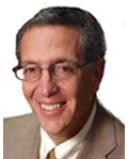
Chronic Pain
John Sarno, M.D., An American Hero
Marking a shift in how we treat chronic pain. By David Hanscom, M.D.
Posted July 17, 2017
By David Hanscom, M.D.
Dr. John Sarno, a pioneer in mind-body medicine, emphasized the age-old concept that anxiety and mood have a significant impact on the treatment of chronic disease, including pain. His landmark best-seller, Healing Back Pain: The Mind-Body Connection, enabled many patients to become free of pain after “mainstream medicine” failed to help. Yet his ideas were not widely adopted by the medical profession. Now more than ever, they need to be.
First of all, mainstream medicine has not only failed to treat chronic pain successfully, its practices are creating more of it. The increase in chronic pain, disability, and the reliance on opiates is staggering. When I give lectures that reflect Dr. Sarno’s ideas, I often ask how many physicians enjoy treating chronic pain. Essentially no one raises their hand. That’s because doctors have not been trained in how to address it properly, and are just as frustrated as their patients.
Dr. Sarno practiced family medicine for 10 years after graduating in 1950 from Columbia University. He later went on to train in both pediatrics and rehab medicine. I don’t know the details of how he discovered his concepts, but he understood at a very deep level two things commonly overlooked by today’s practitioners: it is important to listen to the patient, and emotional pain often manifests in physical symptoms.
I was introduced to Dr. Sarno’s concepts in 2011 by Dr. Howard Schubiner, an internist specializing in pain, in Detroit, MI who uses Dr. Sarno’s concepts in his practice. (1) He was the keynote speaker at a medical course I organized, “A Course on Compassion: Empathy in the Face of Chronic Pain.” I had been in chronic pain for fifteen years and free of pain for about eight years at the time. However, I could not figure out how I became pain free. Within 45 minutes I had my answer.
Dr. Sarno understood that the majority of physical symptoms are caused by changes in the body’s physiology. We have all experienced them. When you are stressed, your heart races, your muscles tighten, you breathe rapidly, you sweat, and basically get ready to defend yourself or flee. Data now shows that nerve conduction in animals under stress also increases, which causes them to feel more pain. Yet when chronic pain persists, most physicians look for a structural cause. They don’t realize the root cause is the patient’s emotional state, and requires no further investigation. Sarno called this Tension Myositis Syndrome (TMS), which includes over 30 symptoms. Dr. Schubiner’s term for TMS is Mind Body Syndrome (MBS). Both describe the same mind-body connection.
Sarno used the word “rage” when describing the state of mind that patients are in when they are trapped by pain. The title of a recent documentary of his life is All the Rage. The latest neuroscience research validates this. In patients with chronic pain, the body’s stress chemicals remain elevated, causing every organ system to respond in its unique way to the adrenaline and cortisol assault. (2) Those of us who have used or suggested variations of Dr. Sarno’s principles have witnessed hundreds of patients become free of pain. It turns out that chronic pain is curable using strategies that calm down the nervous system and stimulate the formation of alternative neurological pathways. Instead mainstream medicine throws random, simplistic solutions to the complex problem of chronic pain, which is simply wrong.
It is saddening that Sarno was never able to enjoy the support he deserved in his lifetime. I don’t understand how anyone can be critical of someone who had so much success treating patients, especially since the traditional approach does not work and no one in the medical community has come up with a better way to treat pain.
My wife and I met Dr. Sarno and his gracious wife in NYC about four years ago. We spent a couple of hours with them before I had to shoot a TV segment in downtown. I learned that he interviewed every patient personally by phone before he saw them in the office. It was clear that he understood the concept presented by Dr. Francis Peabody in 1927 that “The secret of care is caring for the patient.” (3)
The most remarkable part of the visit happened just after we left to rush to the shooting. We were standing outside their apartment when it began to rain. It wasn’t just raining; it was a deluge. We couldn’t even get to a cab without getting soaked. I wondered how I was going to film a TV segment; given we were close on time. Suddenly the front door opened and the bellman handed an umbrella sent down by the Sarno’s. We were stunned by how quickly the problem was solved. I know I should have sent back the umbrella but we wanted to keep it as a memory to a great man and wife. (I did thank them). I still have it.
I have helped hundreds of my patients become pain free using my version of Dr. Sarno’s ideas. He has also been an inspiration for me to keep moving forward in spite of a lot of resistance. Sarno has fostered a small army of providers to keep it all moving forward, and I am privileged to be part of this legacy. As many of his patients have said, “Thank you Dr. Sarno.”
David Hanscom, MD, is the author of Back in Control: A Surgeon’s Roadmap Out of Chronic Pain, which he could not have written without understanding these profound insights and ideas.
Website: www.backincontrol.com
More info:
David Hanscom, M.D., is a leading orthopedic spine surgeon at the Swedish Neuroscience Institute in Seattle, WA. Though he believes that surgery and medication have a role, he knows that these standard courses of treatment aren’t what’s needed to treat chronic pain. Instead he provides the framework so the patient can find his or her solution allowing them to live free of pain, forever. His method, which transforms all kinds of pain, including back, neck, arthritis, fibromyalgia, and migraines, is explained in Back in Control A Surgeon’s Roadmap Out of Chronic Pain.
References
1. Schubiner, Howard. Unlearn Your Pain. (2016). Pleasant Ridge, MI: Mind Body Publishing.
2. Abbass, Allan. Direct diagnosis and management of emotional factors in chronic headache patients. Cephalgia (2008); 28:1305-1314.
3. Peabody, Francis. The care of the patient. JAMA (1927); 88:877-882.



